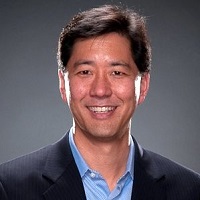摘要: In this special guest feature, Michael Kanazawa, EY Global Innovation Realized Leader and EY Americas Advisory Growth Strategy Leader, discusses why data scientists and engineers should be working with designers, futurists, and business executives. With over 20 years of strategy and innovation experience, Michael is seasoned in developing corporate strategy and transformation as well as in building businesses – both within global corporations and as an entrepreneur. He earned an MBA from the University of Southern California, and BA in Economics and Mathematics from the University of California at Santa Barbara.

▲圖片標題(來源:Michael-Kanazawa)
Mathematician or artist? Right now, we’ve built a way of living, educating and working that says you’re either one or the other. Yet, in fact, this way of viewing the world is both myopic and inaccurate. After all, look at Leonardo Da Vinci, not only among history’s greatest artists but one of its foremost scientific thinkers and inventors too.
As a business, viewing your workforce in these black and white terms is also increasingly dangerous. Sure, not many of us are a Da Vinci but we all have skills that straddle both art and science – individually and, perhaps more importantly, collectively. For organizations, maximizing these diverse capabilities by combining human-centered designers, data scientists, futurists, and business executives is the way to lead the future. Failing to do so risks being consigned to the past.
Deterministic thinking
Before we consider why, let’s remind ourselves of two of big data’s most common misconceptions. First, that it’s a vast sea, with information disparately spread out just below the surface. It’s not, it’s a well. A deep pool, the further down which we go, the richer the patterns, connections and insights we uncover. Second, the more data we have, the more insightful we’ll be. Not necessarily. Often, having a vast amount of information can be overwhelming, making it harder, not easier to find the answers we’re looking for.
Yet there’s a third, more systemic issue at play here too. Currently, organizations tend to forecast using a deterministic mathematical model developed by ancient Greek philosophers. This essentially involves making precise predictions based on historical information and known relationships before searching the data for evidence that confirms them.
The problem is, this leaves no room for random variation or finding unanticipated futures. No opportunity to uncover deeper shifts in underlying patterns within the surface patterns we can see or identify connections that weren’t previously apparent. As a result, a whole heap of possible insights go to waste.
See what you’re not seeing
The real state-of-the-art, therefore, comes in employing tools such as AI, neural networks and deep learning to go further, faster. To show us what we’re not seeing, rather than confirm what we’re expecting to see. To take information from inside and outside our organization. And do it all in real time.
By doing so, businesses can get to know consumers as individuals – then use that knowledge to generate new value and better outcomes for customers. Imagine, for example, an online retailer combining what it already knows about a customer’s buying patterns – perhaps they’ve previously paid a premium for more sustainable products – with external data that tells it that same customer is about to give birth to their first child. Armed with this previously unknown connection, the retailer can target them with relevant marketing around sustainable baby wipes and diapers. The offer and products are introduced just at the right time, in the right way, to the exact right customer.
詳見全文Full Text: insidebigdata.com
若喜歡本文,請關注我們的臉書 Please Like our Facebook Page: Big Data In Finance


留下你的回應
以訪客張貼回應